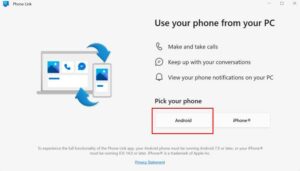Why Use Synthetic and Real App Monitoring Together?

Image Credit – Pixabay
52% of mobile app users claim that a bad user experience with your app will often result in them never interacting with your brand again, according to Impact BND. This is nothing but a simple representation of the modern user’s mindset when it comes to using mobile applications. Users are typically impatient, and they expect you to launch your mobile application as soon as possible with minimal to no glitches.
Unfortunately, it is almost impossible to launch a perfect application right off the bat. This is why real-time application monitoring has always been invaluable in providing insights on the looming threats to your user experience. When combined with synthetic app monitoring, on the other hand, both strategies can work together to improve your overall app performance.
Here is how combining both monitoring techniques will benefit your application:
Why You Really Need Application Monitoring
Customers expect nothing but perfection from businesses. As such, any glitch in your system will result in the potential loss of a customer as they look to work with another business that is more effective. There is also the risk of damaging your reputation as an unsatisfied customer will often spread the word concerning your inefficiencies.
While this will strain your motives to maintain loyal customers, it will also spawn a higher maintenance cost as your IT department works overtime to remedy any application problems they face. Lastly, an inefficient app can also impede the productivity of your employees, especially if they too need access to the app.
Synthetic vs. Real App Monitoring
Real or active app monitoring is where you gather information on how your application is functioning in the real world. This strategy is unscripted and will mostly alert you of issues that need to be addressed as they happen. With a reliable APM solution by your side, you can get to learn more about the functionality, availability, and responsiveness of your application.
On the other hand, synthetic app monitoring is scripted in that it simulates the concept of users interacting with your app and identifies any loopholes. In most cases, it can be valuable before the launch of your application to ensure that everything is in tip-top shape. While it seems like the perfect solution for your app monitoring goals, it falls short in identifying a few important aspects of application monitoring.
What Synthetic App Monitoring Doesn’t Identify
Synthetic app monitoring doesn’t measure the actual interaction of the users with your app which often results in you feeling that your app is doing okay while there might be some looming issues. Firstly, it might fail to identify intermittent issues with your app depending on when you conduct the test. Secondly, problems that your app might face while using specific browsers and mobile devices might not be necessarily pointed out during the scripted monitoring sessions.
Geographical problems such as network issues might bar the user from experiencing the best version of your app, but this might be tough to identify during synthetic tests. Lastly, you might fail to gauge the health of your app to the granular level when only relying on synthetic app monitoring. For instance, it might be borderline impossible to cover every iteration in your app when testing how users interact with the cart.
Why You Should Combine Both Aspects
Real app monitoring will provide you with enough information about how users interact with the app while synthetic monitoring will help you gauge the expected interaction along with third party impact and availability monitoring. Where the latter misses the problems outlined above, the former will tend to miss identifying problems such as third-party issues, outages, and even page errors.
Since every monitoring strategy has its form of blind spots, their counterpart can help eliminate this blind spot. By using both aspects in tandem, you will get enough visibility in the functioning of your app and identify any loopholes in app functionality.
Conclusion
The first step to battling impaired user experience is to have enough data to spot any inconsistencies. The last thing your brand needs is to learn about user experience issues from the users themselves. Leverage both synthetic and real app monitoring to prevent app issue proactively.







